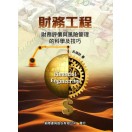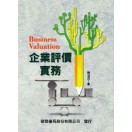最新書籍
Description
For introductory Personal Finance course
This title is a Pearson Global Edition. The Editorial team at Pearson has worked closely with educators around the world to include content which is especially relevant to students outside the United States.
Through the presentation of the Ten Fundamental Principles of Personal Finance, this text empowers students with the knowledge they need to successfully make and carry out a plan for their own financial future.
The fifth edition has been substantially revised to reflect current changes in the financial environment, and student learning styles, while building upon the same basic logic and fundamental principles of personal finance. This edition has been streamlined to focus on the “need to know” foundations of personal finance with a greater emphasis on visual examples in the form of flow charts, pie charts, and bar graphs.
Features
For introductory Personal Finance course
Through the presentation of the Ten Fundamental Principles of Personal Finance, this text empowers students with the knowledge they need to successfully make and carry out a plan for their own financial future.
The fifth edition has been substantially revised to reflect current changes in the financial environment, and student learning styles, while building upon the same basic logic and fundamental principles of personal finance. This edition has been streamlined to focus on the “need to know” foundations of personal finance with a greater emphasis on visual examples in the form of flow charts, pie charts, and bar graphs.
The Ten Principles of Personal Finance: Throughout the text, each chapter touches back on the fundamental Ten Principles of Personal Finance introduced in Chapter 1 and demonstrates to students how these principles apply to specific situations.
The Personal Finance Workbook: Each new copy of the text is accompanied by a Personal Finance Workbook that contains tear-out worksheets to encourage step-by-step analysis of the decisions examined in the text. Used to assign homework assignments or as a student study guide, every worksheet is also available electronically on the book website. Along with a section on how to use a financial calculator, the workbook also includes:
- Your Financial Plan: Guides the student, through a series of exercises that utilize the worksheets, to generate a very basic financial plan to explore where they are today, where they will want to be, and what they need to do to get there.
Easy-to-follow Advice: The proactive checklists, which appear throughout the text, serve as a useful learning tool for students. These boxes identify areas of concern and emphasize key questions to ask when buying a car, getting insurance, investing in mutual funds, and performing other personal finance.
Other Points of Distinction
Learning Objectives: Each chapter opens with a set of action-oriented learning objectives. As these objectives are covered in the text, students will find an identifying icon in the margins.
Stop and Think: These short boxes provide the student with further insight on the financial implications following key topics.
Money Matters: Money Matters Boxes, written by Marcy Furney, contain complementary advice from a certified financial planner.
Real-life Cases:
Be a Financial Planner-Discussion Cases
Each chapter closes with a set of mini cases which present real-life problems that not only tie chapter topics together but also provide students with the opportunity to form a financial decision.
Be a Financial Planner-Continuing Case: Cory and Tisha Dumont
The continuing case of Cory and Tisha Dumont gives students the opportunity to synthesize and integrate the many different financial concepts that are presented in the five parts of this text. By observing the progression of this case, students are encouraged to:
- Analyze a changing financial situation
- Construct financial statements
- Calculate taxes
- Measure risk exposure
- Develop a financial plan
NEW! Streamlined and Graphic Rich: This edition's focus on the “need to know” foundations of personal finance include:
- Number of Principles Reduced to Ten-By combining related principles and changing the order to mirror the text, this new addition condenses key topics for easier comprehension.
- Two New Principles Added-Principle 6: Waste Not, Want Not - Smart Spending Matters focuses on the importance of frugality and being a smart, well-informed consumer and Principle 9: Mind Games and Your Money takes an in-depth look at how behavioral biases can lead to financial mistakes.
- Visual Aides-Greater emphasis was placed on offering the student more in terms of flow charts, pie charts, and bar graphs.
NEW! Part Openers: Each of the five parts included in this edition open with a discussion as to how the chapters in this part relate to specific principles.
NEW! Facts of Life: These short boxes provide interesting facts that highlight the material as it applies to the “real-world” and serve to lighten up the text.
Updated! Reflects the changes brought on by the 2008 financial crisis:This edition incorporates information on the historic financial crisis of 2008. For instance, Chapters 11 and 13 were updated to include information on the October 2008 stock market crash.
NEW! Chapter Updates: In addition to streamlining every chapter to focus on key concepts, this edition incorporates current pop-culture references as discussion topics (for example, Chapter 9 takes a look at the insurance needs of Jack Bauer from the FOX TV show 24), places a greater emphasis on the Internet and utilizing free financial websites, and updates all the latest trends that students will encounter in today's financial market.
NEW! Up to date coverage: Current global cases and examples from Asia, Europe and the Middle East are included as well as information on the financial crisis of 2008
- Chapter 5 Opening Vignette - Yao Ming p162
- Chapter 14 Opening Vignette - Shah Rukh Khan p466
- Chapter 15 Opening Vignette - Lance Armstrong p498
- Chapter 18 Opening Vignette - United Arab Emirates and economic growth p600
- New 'Be a Financial Planner' Discussion Cases throughout
New to this Edition
NEW! Streamlined and Graphic Rich: This edition's focus on the “need to know” foundations of personal finance include:
- Number of Principles Reduced to Ten-By combining related principles and changing the order to mirror the text, this new addition condenses key topics for easier comprehension
- Two New Principles Added-Principle 6: Waste Not, Want Not - Smart Spending Matters focuses on the importance of frugality and being a smart, well-informed consumer and Principle 9: Mind Games and Your Money takes an in-depth look at how behavioral biases can lead to financial mistakes.
- Visual Aides-Greater emphasis was placed on offering the student more in terms of flow charts, pie charts, and bar graphs.
NEW! Part Openers: Each of the five parts included in this edition open with a discussion as to how the chapters in this part relate to specific principles.
NEW! Facts of Life: These short boxes provide interesting facts that highlight the material in the real world and serve to lighten up the book.
Updated! Reflects the changes brought on by the 2008 financial crisis:This edition incorporates information on the historic financial crisis of 2008. For instance, Chapters 11 and 13 were updated to include information on the October 2008 stock market crash.
NEW! Chapter Updates: In addition to streamlining every chapter to focus on key concepts, this edition incorporates current pop-culture references as discussion topics (for example, Chapter 9 takes a look at the insurance needs of Jack Bauer from the FOX TV show 24), places a greater emphasis on the Internet and utilizing free financial websites, and updates all the latest trends that students will encounter in today's financial market.
NEW! Up to date coverage: Current global cases and examples from Asia, Europe and the Middle East are included as well as information on the financial crisis of 2008
- Chapter 5 Opening Vignette - Yao Ming p162
- Chapter 14 Opening Vignette - Shah Rukh Khan p466
- Chapter 15 Opening Vignette - Lance Armstrong p498
- Chapter 18 Opening Vignette - United Arab Emirates and economic growth p600
- New 'Be a Financial Planner' Discussion Cases throughout
Arthur J. Keown
Virginia Polytechnic Instit. and State University
1.投影片 2..題庫 3.教師手冊
PART 1: Financial Planning
1.The Financial Planning Process
2.Measuring Your Financial Health and Making a Plan
3.Understanding the Time Value of Money
4.Tax Planning and Strategies
PART2: Managing Your Money
5. Cash or Liquid Asset Management
6. Using Credit Cards: The Role of Open Credit
7.Using Consumer Loans: The Role of Planned Borrowing
8.The Home and Automobile Decision
PART 3: Protecting Yourself with Insurance
9. Life and Health Insurance
10. Property and Liability Insurance
PART 4: Managing your Investments
11. Investment Basics
12. Securities Markets
13. Investing in Stocks
14. Investing in Bonds and Other Alternatives
15. Mutual Funds: An Easy Way to Diversify
PART 5: Life Cycle Issues
16. Retirement Planning
17. Estate Planning: Saving Your Heirs Money and Headaches
18. Fitting the Pieces Together



















